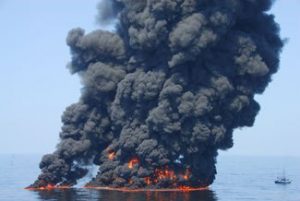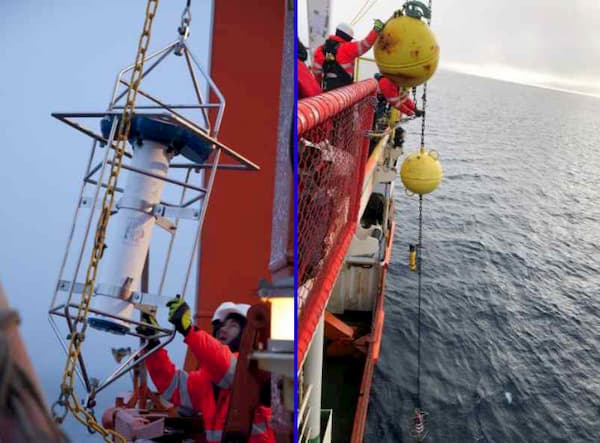
The term, “in situ burning,”is the oil industry’s terminology, used to describe the disposing of the oil on the surface that is thick enough to ignite. This a visual example of the ineffective technology currently being utilized.
The “Down Stream” consequences of burning oil on the ocean surface will equate to heavy plumes of toxic smoke and soot, which will later rain down back onto the ocean surface and onto snow and ice, directly causing the lessening off the albedo effect.
In addition, the resulting soot will adversely affect small fish and seabirds, who will ingest the sinking soot balls, mistaking them as food, will be introducing these toxins into the food chain.
In the arctic, polar bears, walruses, and seals hauling out onto the ice, and seabirds diving for their food, will clean themselves of the soot, further ingesting toxins. Toxins that will weaken, and in many cases, kill them.
Burning crude oil on the ocean surface lays bare the indifference that the oil industry holds for the arctic environment.
In Situ Burning” of crude oil in the arctic should be condemned by all nations.
Improved oil spill response is the solution to this ill-advised mode of disposal.
Read more at: Acid Society







